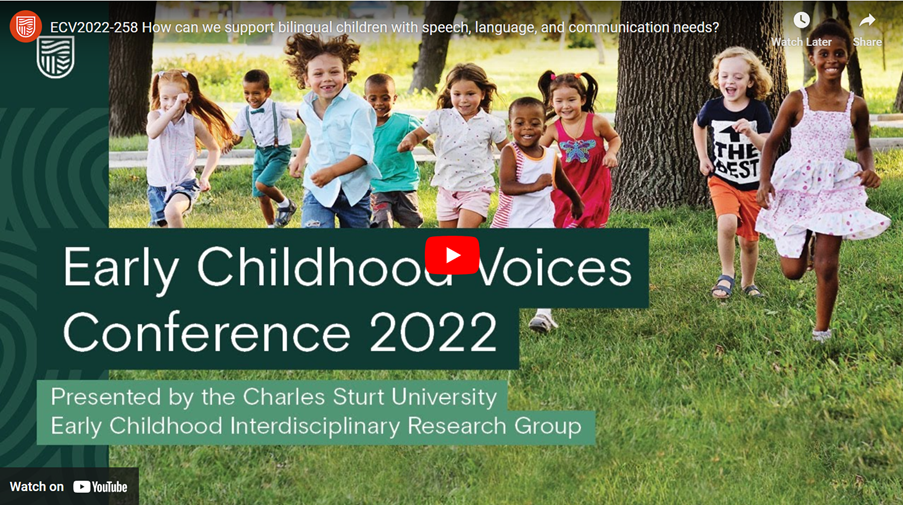Elaine Ashton presented at the Early Childhood Voices conference and a recording of her presentation is here: https://earlychildhoodresearch.csu.domains/early-childhood-voices-conference-2022/ecv2022-258/

Background: Bilingualism does not cause or contribute to speech, language, and communication needs (SLCN). However, bilingual children are just as likely to have SLCN as monolingual children. Most UK speech and language therapists (SLTs) are monolingual and will therefore need to work with interpreters when working with bilingual children.
Aim: To identify the enablers and barriers to delivering effective and equitable speech and language intervention for bilingual children.
Method: Part of the Language Intervention in the Early Years (LIVELY) project consisted of a series of single case studies working with bilingual children. Language intervention was delivered in the home language by an experienced SLT working with interpreters, within education settings.
Results: There were several key learning outcomes from the single case studies. Preparing appropriate assessment and intervention resources for languages other than English was time-consuming and complex. During the intervention sessions the children rarely spoke. Additional training was needed to support the interpreters in understanding their roles.
Conclusions: Working with bilingual children and interpreters can be challenging for monolingual SLTs. It is important to consider the impact of cultural differences in all aspects of the assessment and intervention process. Working in home language is essential for providing an equitable service for bilingual children.
Implications for children and families: Speaking more than one language is advantageous. If you have concerns that your child has difficulties in all the languages they speak, contact a speech and language therapist for advice and support.
Implications for practitioners: It is possible to deliver home language intervention for bilingual children even if you are a monolingual speaker. Extra time and preparation are key to helping you meet the needs of bilingual children with SLCN.
